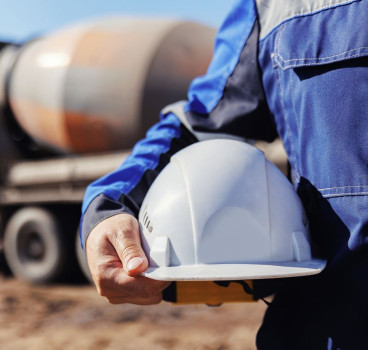Thermal imaging technology reduces risk
The construction industry faces many challenges. One of these is around delivering projects on time and on budget writes Fiona Irvine LIoR, Technical Services Advisor, Sika UK. Refurbishment projects is one area where accurately predicting cost and time is notoriously difficult as all too often unforeseen factors come into play when a project starts, typically as a result of stripping away part of the building and finding something unexpected. Thermal imaging is one area where technology is helping to overcome this and is now a key part of Sika roof refurbishment offering.
Infrared thermography (IRT) and thermal imaging technology detect radiation in the long-infrared range of the electromagnetic spectrum (roughly 9,000–14,000 nanometers or 9–14 µm). This produces an image called a thermogram. Since infrared radiation is emitted by all objects with a temperature above absolute zero, thermography makes it possible to see an environment with or without visible illumination. The amount of radiation emitted by an object increases with temperature. Therefore, thermography allows you to see variations in temperature. When viewed through a thermal imaging camera, warm objects stand out well against cooler backgrounds.
Thermography has a long history, but its use has increased dramatically with the commercial and industrial applications of the past fifty years. Typical uses include firefighters who use thermography to see through smoke, to find people and to localise the base of a fire. Maintenance technicians use thermography to locate overheating joints and sections of power lines, which are a sign of impending failure. In the construction industry it has been traditionally used to identify heat leaks in faulty thermal insulation and to improve the efficiency of heating and air-conditioning units.
Sika has been using thermal imaging technology since 2014. Investment in the technology was driven by the Sales Management Team as a way of adding value to clients. Sika has also invested in me as an individual to become a certified Level 1 thermographer, with training conducted by the world renowned Infrared Training Centre (ITC). As a global leader, working across a variety of market sectors from construction to automotive (see http://bit.ly/2o8Ca6Z) investing in technology and adding value across our supply chain is an essential part of what we do - everyday.
We have predominantly used thermal imaging on refurbishment projects to track the extent of damage to the existing roof build up. It provides a much more comprehensive survey report and enables the creation of a more appropriate and suitable specification. It also helps to highlight, in advance, any issues that would have otherwise been unforeseen, helping to reduce risk and avoid any delays or additional costs.
For example, we can locate saturated insulation within a roof build up. This can then be backed up with core samples to determine if a roof can be locally stripped to remove damaged insulation or whether a full strip is required. This means we can be more accurate when working with contractors, helping them to accurately price work and identify the most suitable approach, such as removal and replacement of localised roof areas.
Thermal imaging provides a wealth of information the naked eye cannot see. It allows us to narrow down the locations where destructive core samples are required. It also provides a visual representation of how the roof is performing thermally.
Sika is always striving to be ahead of the competition and utilsiing thermal image is one element of this. However we don't intend to sit on our laurels. There are several ways to survey a roof and we will continue to look at how technology can aid this.
However it shouldn't stop there. Sika has successfully proven that thermal imaging can add value to roof refurbishment projects and we must now consider what other construction applications it has beyond a roof. For example, how can it be used on flooring, or structural strengthening or concrete repair applications? We will continue to invest in technology that helps us reduce clients risk and deliver projects more effectively. It's what's makes Sika that little bit different – it's what we do every day.
Visit: http://gbr.sika.com/en/group/about-us/sika-everyday.html
Additional Blogs

The silent death of the fixed-price contract
For decades, the fixed-price contract has been the backbone of construction procurement. It promised certainty with a defined scope, an agreed sum and a clear transfer of risk from client to...
Read moreWhy good contractors are walking away from bad projects
There is a growing change happening across the construction industry, one that many clients still have not fully recognised. Highly competent, reputable contractors are increasingly walking away from...
Read more

When fire breaks out who really knows the system
The story that caught my attention recently wasn’t about fire growth or building loss, it was about confusion. Specifically, the confusion faced by the fire service when arriving at buildings...
Read more